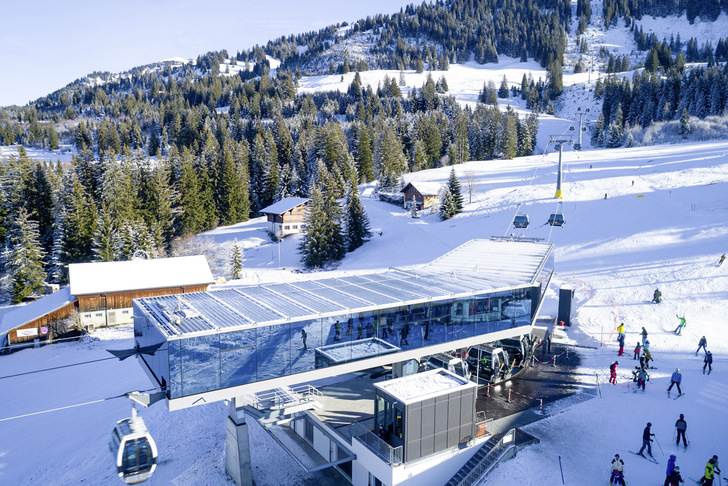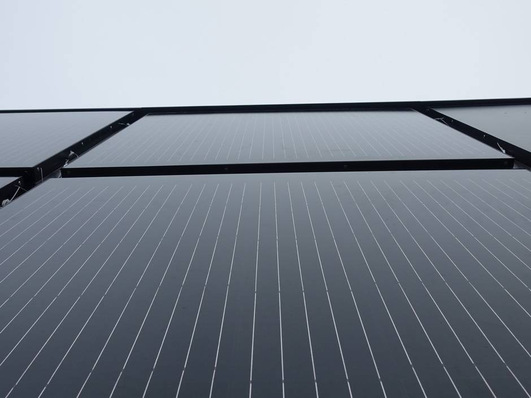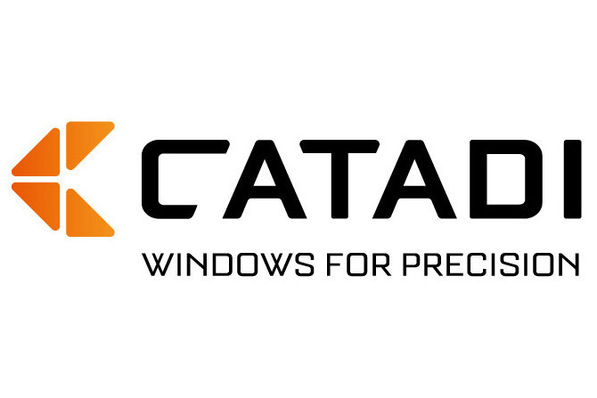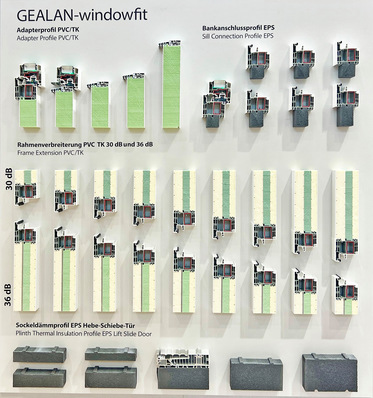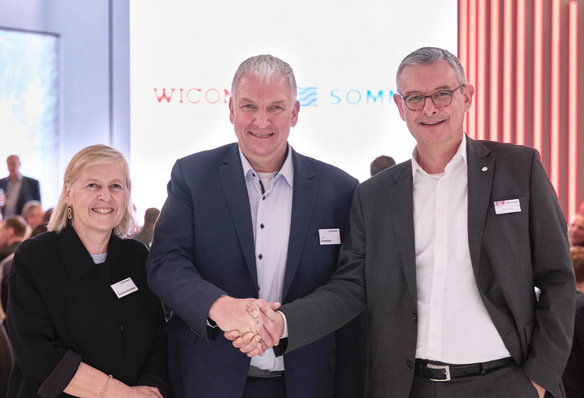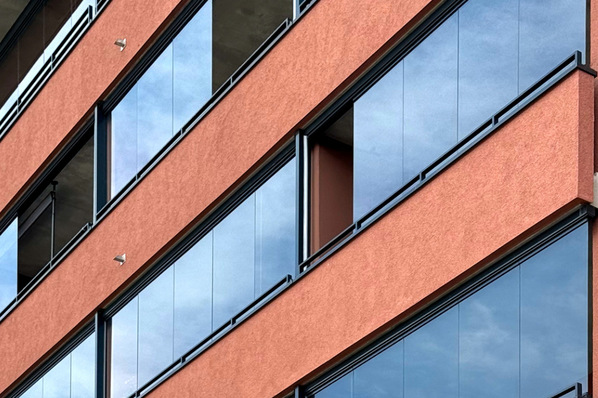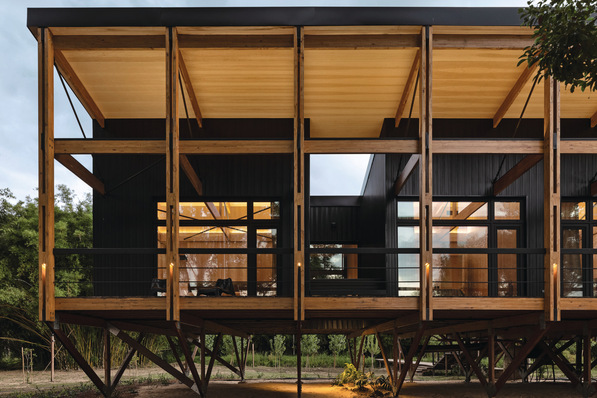The cable car from the Swiss town of Saanenmöser up to the Saanerslochgrat ridge was once a technological milestone and one of the most modern cable cars. Now after almost 40 years of operation, it no longer met today's requirements and had to be replaced. The new cable car system is the first D-line gondola lift in Switzerland and is characterised by very quiet operation, attractive design and time-saving maintenance. On a route of 2,858 metres with only 16 supports (instead of 29 previously), it transports almost 70 cabins with up to 2,000 people per hour and direction of travel.
Visible technology
In order to underline this special cable car technology with its outstanding architecture, the client launched a competition. A planning office from Stuttgart won the bid. The design envisaged accommodating the entire technology for coupling, decoupling and redirecting the cabins in a cube with a corrugated iron roof and a glass facade, thus making it visible to visitors.
This brought with it great static challenges: Cable car station roofs are usually made of curved acrylic glass so that the snow can slide off to the side and the remaining snow load is therefore relatively light.
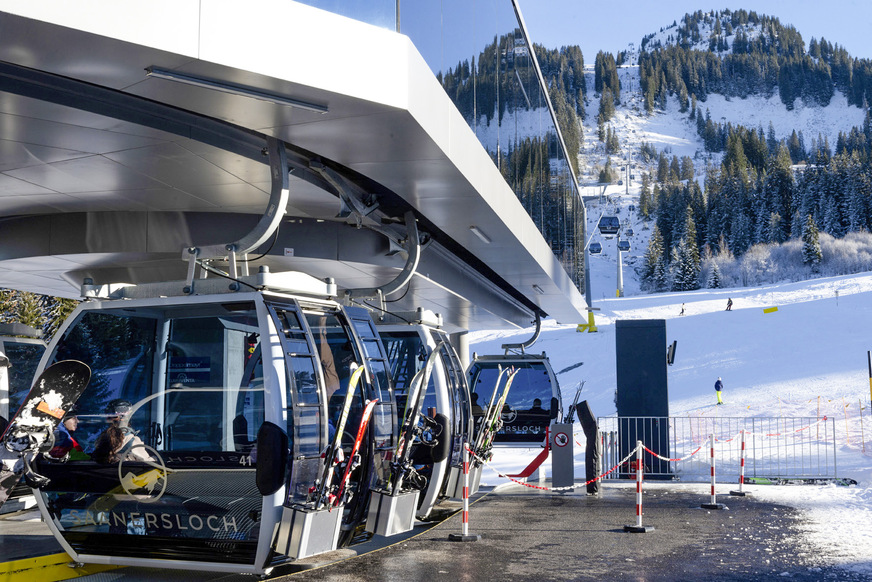
Doppelmayr/Garaventa
However, due to the cubic shape of the new glass structure that the Stuttgart planners designed, the snow remains on the roof and thus entails a significantly higher total load. As a result, the roof of the new building is intended to be able to bend up to 7 cm.
Also in Switzerland:
PV Power roof for historical building
Such a high level of deflection made completely new ways of constructive glass mounting necessary: To ensure that the enormous loads can be safely absorbed, the panes are glued into a profile at the top and bottom edge of the glass before they leave the factory. This has two decisive advantages: On the one hand, the prefabricated components can be installed easily, quickly and regardless of the weather. On the other hand, they are individually hung on the roof like pictures on a wall. This means that each facade element can slide up and down independently of the ones next to it.
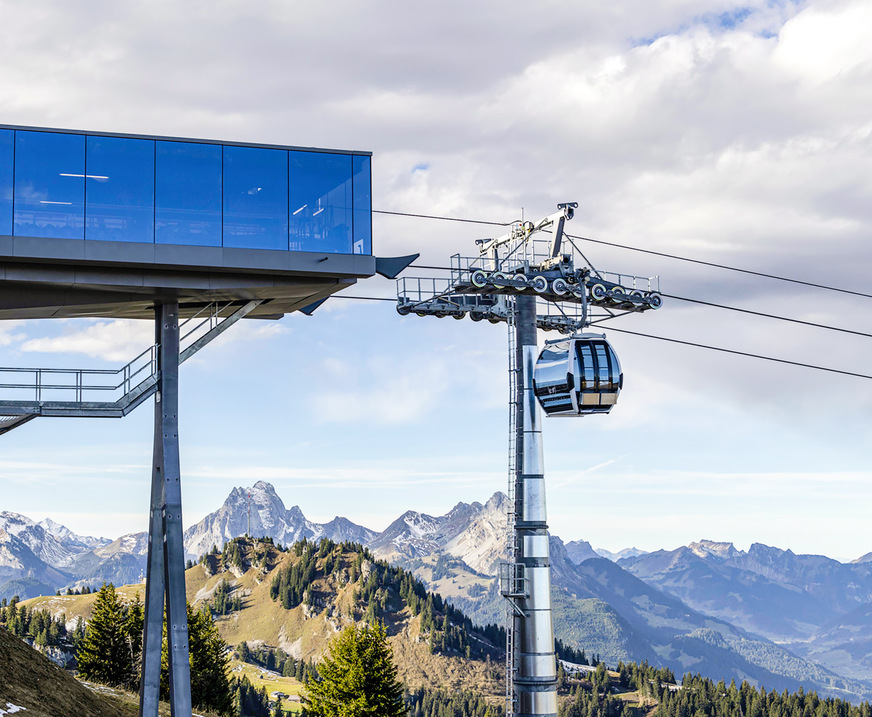
Doppelmayr/Garaventa
Special glass panels by Glas Marte
The glass panels of the facade have a standard size of 3.13 by 2 metres, or a maximum of 3.13 by 2.26 metres, and are thus very heavy. So the people in charge chose a solution for glass mounting at the interface between glass and metal. This is achieved by high-quality glass bonding.
Did you know? Quality is a key to success
In order to have the right glass available for this demanding construction task, those responsible turned to Glas Marte. The company offers an extensive range of different glass solutions in combination with sound customer advice. For the three cable car stations, the glass specialist delivered a total of around 800 square metres of laminated safety glass (VSG) consisting of two toughened glass panes. Sentryglass-plus is used as an intermediate layer. The special film consists of a thermoplastic (ionoplast), which is up to five times stronger and a hundred times stiffer than the usual VSG intermediate layers. Based on the constructive solution and the improved materials, Glas Marte say they were able to deliver the first standard all-glass facade that withstands very large vertical deformations.
LED technology in glass
The glass used in the Saanenmöser-Saanerslochgrat cable car stations also has a special colour called Guardian SunGuard HD Royal Blue 20, which is very rarely used in Europe. The aim was to give the gondolas and glass cubes that encase the cable car technology an elegant appearance. If required, the glass used can also be retrofitted with LED media technology, which gives the cable car operator interesting options for facade design. For example, it can convey information in large formats on the facade or also use it as advertising surfaces.
Also interesting facades:
Warm edge spacers are it in sustainable construction
A vibrantly colourful facade for the Plaza in Munich
How the glass industry can benefit from the market for BIPV







